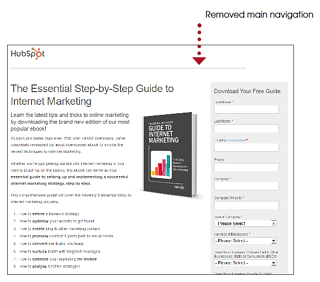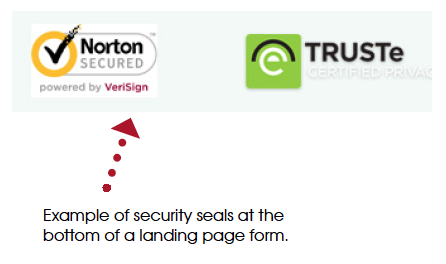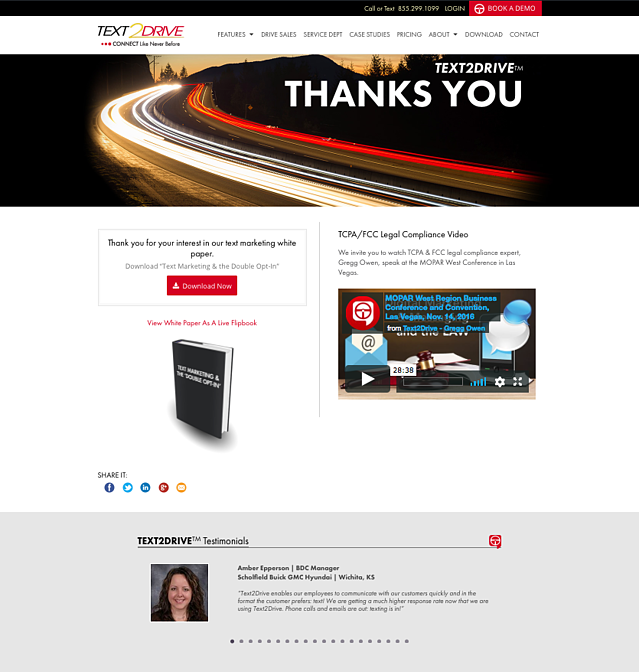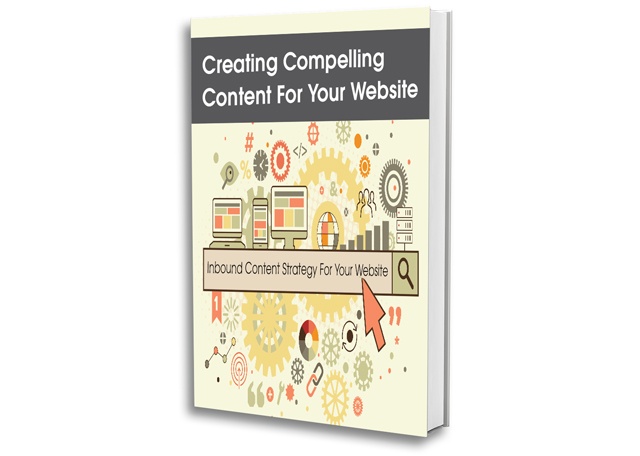8 minute read
The Importance Of Leads To Your Business
“LEADS ARE THE METRIC THAT, AS MARKETERS, WE RELY ON. BECAUSE LEADS MEAN MONEY.” – KIPP BODNAR, HubSpot.
Generating leads – both high in quantity and quality – is a business’s most important objective when trying to grow a company. A successful lead generation engine is what keeps the funnel full of sales prospects while you sleep. Surprisingly, only 1 in 10 companies feel their lead generation campaigns are effective. What gives? There can be a lot of moving parts in any lead generation campaign and often times it’s difficult to know which parts need fine-tuning.
In this guide, we provide 10 lead generation landing page examples, discuss the mechanics, and go over the techniques you should utilize to increase leads and revenue. And It all starts with your website and content!
So, what’s the best way to present your brand to prospects and how to get more leads from your website?
It’s simple, in your landing pages. Landing pages are one of the most important elements of lead generation. In fact, according to MarketingSherpa’s research, landing pages are effective for 94% of B2B and B2C companies. The use of landing pages enables us to direct website visitors to targeted pages and capture leads at a much higher rate.
Effective Lead Generation Landing Page Examples, Elements & Best Practices
Create landing pages with compelling information and eye-catching elements to entice viewers. Design your landing page with a single objective or offer, whether that’s to promote a new eBook, white paper, register people for a webinar, offer a free demo, etc. To learn more about different content offerings, check out this great article where we discuss the six types.
By keeping it simple and clean, you are allowing them to navigate your page easily and quickly, without distractions or overloading them with too much information at one time. Viewers are easily distracted, don’t give them a reason to leave your website without converting first.
Lead generation landing pages are meant to create a seamless experience between an advertisement and the information presented to a prospect. All of which means the prospect only sees the information they’ll find most compelling. So let’s begin:
1. Headlines & Titles
The majority of your viewers will read the headline of your page, even if they just briefly skim through your information, so the headline should be the focal point of your page.” Action headlines” push visitors to take action, and “number headlines” put a value on the offer, or feature a statistic to catch people’s attention, but either way you’ll want the headline to involve the benefits you have to offer.

Focus on creating an amazing title, because if you have a great offer with a bad title no one will download it. But if you have an amazing headline, suddenly everyone wants it.
2. Remove The navigation

Have you ever walked into a store and been so overwhelmed with options that you didn’t end up buying anything? That’s why an optimized landing page shouldn’t have a navigation menu. Websites require a navigation menu because they are more about providing a browsing experience, not designed for conversion. For lead generation pages, having menu options will give visitors an easy chance to leave the page without converting.
3. Relevant images
Images relating to the offer will help in understanding the benefits. Studies show that 65% of people retain information paired with relevant images — compared with just 10% of people who only read the information. Providing images of the benefits your products or services have to offer will result in more customer conversions for your company.
4. The Copy
Most visitors are not looking to read multiple pages of information; they simply want to be able to skim through the page briefly to get an understanding of the key points. Keep your pages short and use bullet points where appropriate. Bullet points keep the wording to a minimum, as well as grabbing the viewer’s attention.
5. Forms
Forms are the key to a landing page. Without them, there is no way to “convert” a visitor into a lead. Forms come in handy when it’s time for people to sign-up, subscribe to your site or download an offer.
You might be wondering how much or how little information you should require with a form. There is no magic answer when it comes to how many fields your form should contain, but the best balance would be to collect only the information you really need to qualify the lead.
The fewer fields you have in a form, the more likely you will receive more conversions. This is because with each new field you add to a form, it creates friction (more work for the visitor) and fewer conversions. A longer form looks like more work and sometimes it will be avoided altogether. But on the other hand, the more fields you require, the better quality those leads might be. The best way to determine what works best is to test it.
6. CTAs

The CTA is the call-to-action, which is the most essential element on a lead generated landing page. This determines how you generate your leads.
The information provided to them throughout your page should be compelling enough to convince them in taking action by clicking on your CTA button to proceed.
The obvious CTA buttons are labeled “Submit” or “Finish,” however, if they are prospects that have hesitations or are unsure in the proceeding, these are words they may feel are too committing. Therefore, labeling your CTA with “Send Me the eBook” provide them with more information on a connected link can make the prospect feel more at ease, while still initiating the commitment of interest to you.
Emphasize the CTA with color and bold print, so it draws attention to the viewers.
7. Trusted Seals & Security Badges
Trust seals, security badges, or logos are symbols of trust will show credibility and legitimacy of your company’s brand.
Displaying trust seals will validate the products or services, therefore, significantly increase the perceived trustworthiness of a brand, and brands that prospects trust are more likely to get a higher conversion rate.
People are more resistant to give up their information these days, especially because of the increase in spam. There are a few different elements you can add to the form or landing page to help reduce a visitor’s anxiety to complete the form.

- Add a privacy message (or link to your privacy policy) that indicates their email will not be shared or sold. Read #9 below for more information about privacy policies.
- If your form requires sensitive information, include security badges, a BBB rating, or certifications so that visitors know their information is safe and secure.
- Adding testimonials or customer logos is another great to indicate social proof. For example, if your offer was for a Free Trial, you may want to include a few customer testimonials about your product or service. Learn more below in #8 about social proof.
8. Social Proof
What better way to show prospects you stand behind your product than to have current customers speak on your behalf?
Include information of customer credibility and statistics such as:
- Customer testimonials
- Reviews of positive experiences
- Case studies
Providing them with proof through actual customer experiences will make more of an impact on their buying decision. Showing the evidence of how your brand compares to other brands will ensure them the credibility and trust of your brand.
9. Privacy Policy
Before continuing in completing a form, online purchasers will want to be reassured that their personal information will be safe and securely protected.
A way to acknowledge this trust of security is to include a privacy policy on the page.
Be careful though, some of these disclosures will take the viewer away from the offer and onto another page. To prevent them from leaving your site, it is recommended that you have the link open up in a pop-up instead of a new tab.
10. Thank You Pages

After a visitor fills out a form, redirect them to a thank you page that is dedicated to letting visitors know where they can receive the offer. A thank you page is also a good place to direct visitors to check out additional company resources and push them down the buyer’s journey further if they already haven’t made a purchase. It is always a good idea to add share buttons so they can spread the word for you to reach a wider audience.
Key Takeaways: How to Optimize Your Lead Generation Landing Pages
- Most viewers will read the headlines, briefly skim through the content, and look at the images. So it is important to make an intriguing headline, bullet point the benefits they will be receiving, and include a great image that will reinforce your offer.
- Design a CTA with color and emphasis that will stand out to viewers and direct them to a simple form to fill out that qualifies them but doesn’t scare your audience away. If requiring sensitive information, use trust and security seals directly below the form and a link to your privacy policy.
- Social proof such as testimonials, positive reviews, and proven case studies that highlight your brand will increase your customer conversion percentage.
- Don’t give them a chance to leave your landing page or get distracted, so remove the header and footer navigation until they become a lead. Once they fill out the form, then you can put the navigation menus back in on the thanks page and lead them further down the funnel by offering them another resource and a chance to share their interest in social media.
Tag Marketing is here to help you reach your business goals and generate more leads. We have several offices in Illinois including Chicago, Schiller Park, Brookfield, and Roselle. Call today at 773-680-6952 for a free, no-hassle consultation.
If you enjoyed our Top 10 Guide Of Lead Generation Landing Page Examples, Elements & Best Practices and want to learn more, download our guide below to get a FREE copy of The 30 Greatest Lead Generation Tips, Tricks & Mechanics. In this guide, we will expose the top 30 techniques used by over 8,000 marketers who generated more than 9.8 million leads last year.

